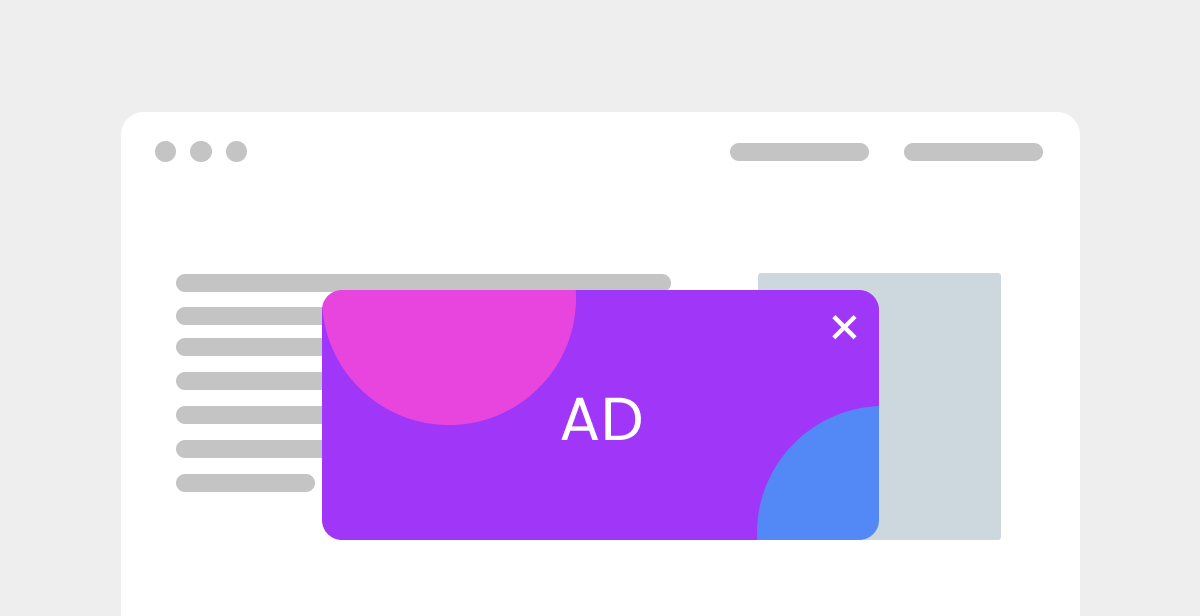Google's updated page performance standards called Core Web Vitals launched in the summer of 2021. Here's what publishers and businesses need to know about taking action to protect your page and search rankings.
Google's standards are designed to measure how readers experience a webpage. Essentially, if your page meets the standards for being user-friendly and informative, Google will score your site, which will affect how your site ranks in its search engine.
Core Web Vitals Basics
Imagine searching online for “the best new date spots in NYC” and then going to page 5 of Google’s search results to find your answer. Some people may be this thorough, but most of us aren't exploring beyond the first or second page. This situation is why every publisher, business, non-profit, and blog has worked towards improving its SEO score and search rankings.
When your website is relevant, trusted, and highly ranked in search, it's more likely to appear on the first page of search results. And as we just explained, having your content on the first page makes it more likely that a user will click on your webpage and engage with your site. In other words, SEO can make or break how easy it is for users to discover a publisher or business’s web pages.
What is Google using to determine page performance?
Core Web Vitals mostly benefit the reader or site user. In order to be a top-ranking website in search, Google encourages websites to check off the following boxes:
- A great, user-friendly experience
- Easily accessible information
Luckily, Google isn’t simply throwing these criteria out there for publishers and businesses to interpret on their own. Core Web Vitals help websites measure their users' experience on-site while offering plenty of room for improvement.
What metrics does Google analyze?
In addition to the other existing web vital signals Google already monitors for (whether a site is mobile-friendly, safe for browsing, secure on HTTPS, and without any intrusive interstitials), there are 3 newer metrics.
These additional metrics include:
Loading Times (Largest Contentful Paint)
Speed matters—a lot. Google knows how impatient users can be while waiting for a page to load, which is why the company is measuring how much time it takes for the largest image or block of text to be visible on the page. If your pages take much longer to load than other similar pages, your site's SEO score will be negatively affected.
Interactivity (First Input Delay)
This metric measures how long it takes for a page to respond when a user interacts with it. An interaction can consist of anything from clicking out of a pop-up to responding to a poll or signing up for a newsletter by clicking a CTA button. The bottom line is: you want your web pages to be highly responsive.

Visual Stability (Cumulative Layout Shift)
Have you ever scrolled through an article and lost your spot because of an ad popping up or a website banner dropping down? If your answer is yes, you've been a victim of a layout shift. Luckily folks at Google know how annoying this can be, so the Cumulative Layout Shift metric is implemented to prevent those experiences from occurring too frequently.
The score Google gives pages for this metric is cumulative, meaning Google will keep track of how often an event like this occurs on a webpage during its entire lifespan. So publishers and businesses will want to make sure they remove intentional layout shifts and get development and product management to review for any accidental layout shifts ASAP.
Why should you care?
Despite the fact that Google will always rank pages with the best overall information first—even if they don't have the best UX—you should still take these updates seriously.
You put so much time and energy into building your site and content and solidifying your SEO scores. Why would you ditch that effort when it comes to improving your page and search rankings based on updated criteria? This is especially questionable since there are easy ways to measure and improve your scores across all these metrics.
Partner with the right companies
In preparation for the update, EX.CO spent a significant amount of time optimizing our monetized video solutions to provide the best UX and to perform based on Google’s benchmarks and page performance measurement tools. This means publishers and businesses using EX.CO’s solutions will be seamlessly able to pass these Core Web Vitals tests.
Since Core Web Vitals will continue to evolve over time, you want to ensure you’re working with partners that will continuously plan for these changes as well.
Core Web Vitals guide
Review the Core Web Vitals FAQs, learn more about the different tools that can help you measure & report Core Web Vitals, and follow web.dev for the latest updates.
Developer/product teams will update your code and run tests
Some important steps to take to improve your page performance based on Core Web Vitals include: serving pages over HTTPS, minimizing your CSS & Javascript, using a browser cache, checking your site for any security issues with this report, and ensuring your page is mobile-friendly with this test.
Need help optimizing your pages to meet the Core Web Vitals standards? Drop your details below.
